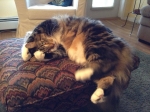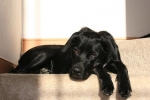Post
by avi123 » Thu Dec 29, 2011 11:26 am
re-edit: In my case, I have not found an ideal pressure below 15 cm to reduce my flow limitations to below the mid level marked on the graph.
Dr Barry Krakow, the well known Sleep Physician, wrote the following about it:
"A reminder that for all practical purposes, the following three terms are interchangeable:
· UARS (upper airway resistance)
· Flow limitation
· RERAs (respiratory effort-related arousals)
UARS as Mini-Suffocations :
First and foremost, let's look at an analogy in cardiology to put to rest the nonsense that UARS does not exist or is somehow not important. We all know that asystole (heart stops) is bad, just as we know apnea (breathing stops) is bad. But, in cardiology, for decades we've known there are many other cardiac arrhythmias producing irregular heart rhythms, and we don't sit back and say, "well it's not asystole, so it must be OK." For decades, unfortunately, that practice is in fact what many physicians were taught or conditioned to believe, "it's not apnea, so it must be OK." Indeed, to this very day, I still see patients who have been to sleep doctors who told them their sleep study was OK because it didn't show apneas.
But, as we like to say, “a little choking is still choking,” therefore I think it is reasonable to state that each of the various forms of sleep-disordered breathing (apneas, hypopneas, UARS) reflects some degree of “suffocation.” Apnea is the most concrete form as the patient awakens choking or gasping, whereas UARS is probably equivalent to a “mini-suffocation,” which while asleep I imagine produces an unpleasant sensation but not choking.
UARS is not Mutually Exclusive of Hypopneas or Apneas
Please appreciate then that UARS is simply on the continuum of breathing events. To complete our analogy, UARS represents a more subtle form of breathing irregularity (or as some say pulmonary dysrhythmia). It is not mutually exclusive of apneas or hypopneas. You can have all three types of events when you are diagnosed with sleep-disordered breathing (SDB). In fact, the most common type of SDB shows all 3 components in varying proportions during the sleep study.
You would think though that apneas are more important than UARS events, right? Well, maybe. Don’t forget that UARS events, like apneas, are also frequently associated with sleep fragmentation and therefore unequivocally associated with daytime sleepiness and fatigue. We have seen patients with severe UARS (e.g. RDI > 40), who unequivocally have more sleepiness than say a patient with a moderate degree of apneas and hypopneas (AHI =20). That is why RDI (apneas + hypopneas + UARS) is more valuable when diagnosing and treating your condition than AHI.
To repeat, it is critical to realize that nearly all patients with OSA also have a UARS component on their diagnostic sleep studies, but if the sleep lab doesn’t use the proper respiratory sensors, they will not see it: "what you don't look for, you will not see!"
and
Good FL numbers. It's not so much good numbers; it's normalized airflow, because it is not so easy to count UARS events. Still, you can find a way to count flow limitation events, and you certainly want to reduce them as much as possible. There are data from Rapoport's group that suggests that an RDI consisting only of UARS (FLs, RERAs) in the range of 15 to 20 is clinically significant, so a number lower than this level should be and usually is the minimum to shoot for. In our lab, we occasionally get some patients below 5, but it's the lab environment, which I think in and of itself prevents the "perfect" titration.
and
UARS is one of the primary reasons that many SDB patients do not achieve an optimal response. As I describe at length in my book, it is a human tendency to "normalize" behaviors, which over time prevents us from obtaining the best possible response to PAP Therapy. If you are so used to fatigue and sleepiness, having suffered for so many years, then how could you possibly discern what a normal level of sleepiness and fatigue should be? Instead, (and I know this from my own trials from CPAP to APAP and finally bilevel), when you experience some improvement, the tendency is to create a new "normal" and wrongly assume that this is "as good as it gets."
Well, it's not as good as it gets if the UARS component of the SDB hasn't been treated, because there is still more to treat. Undoubtedly, most of the members of this forum recognize the fine-tuning and tweaking that's needed to manage mask leaks, mask comfort, mouth breathing, humidifier settings, and nasal congestion, just to name a few of the issues that must be regularly attended to enhance the PAP response.
Notwithstanding, in my clinical experience, I have found that resolving the UARS component of SDB is in the top tier of factors that frequently must be addressed to achieve optimal results, especially so among patients whose regular use of PAP therapy has not yielded the desired effects. "
I (Avi) think that my present increased Nocturia (Nightly urination) is partly b/c of a higher Flow Limitation. Higher Flow Limitation causes more awakening, regardless if there is a "need" to urinate. Dr Krakow seems to agree with it. This is the reason that I would rather use the higher max pressure than a lower one in spite of the higher AHIs and mask leaks at the higher pressure. A Bipap would be the choice XPAP to deal with FL. By using a Bipap I should be able to reduce the FL considerebly more than by using APAP or CPAP. However, this may not suit those with Central Apneas Syndromes.
p.s. More from Dr Krakow on Nocturia: Surprisingly, perhaps, people are very poor judges of what wakes them up. When researchers monitored 80 patients with suspected sleep disorders, they recorded an average of one-and-a half episodes of urination per night. In most cases, the patients said they were awakened by the urge to void, but careful monitoring documented that sleep disturbances were actually responsible for 79% of the awakenings. In men, the major cause was obstructive sleep apnea (see Harvard Men's Health Watch, May 1997); restless legs syndrome was a frequent cause in both sexes (see HMHW, December 1998). Anxiety and various neurological disorders can also contribute to disturbed sleep and nighttime urination, as can insomnia (see HMHW, April and May 1999) and simple habit.
Last edited by
avi123 on Fri Dec 30, 2011 5:03 pm, edited 3 times in total.












